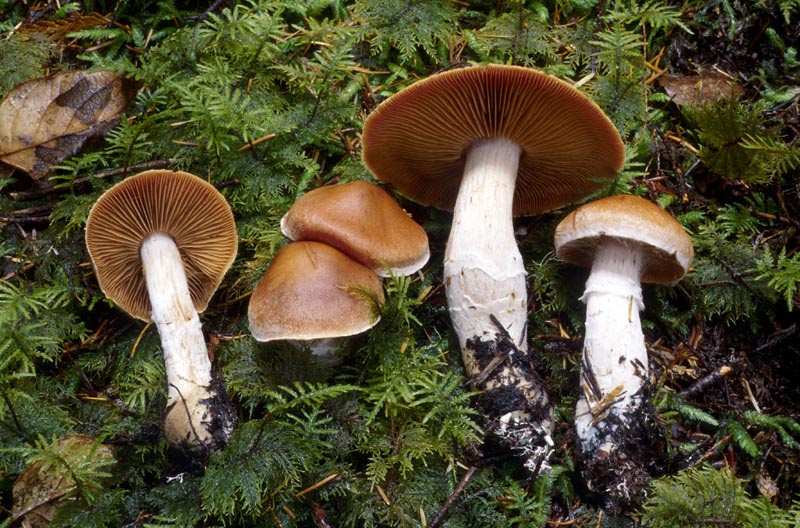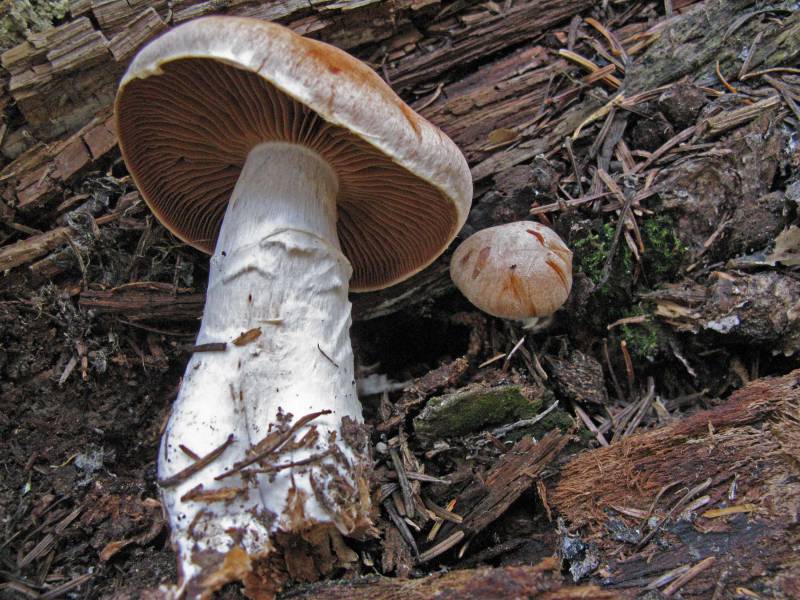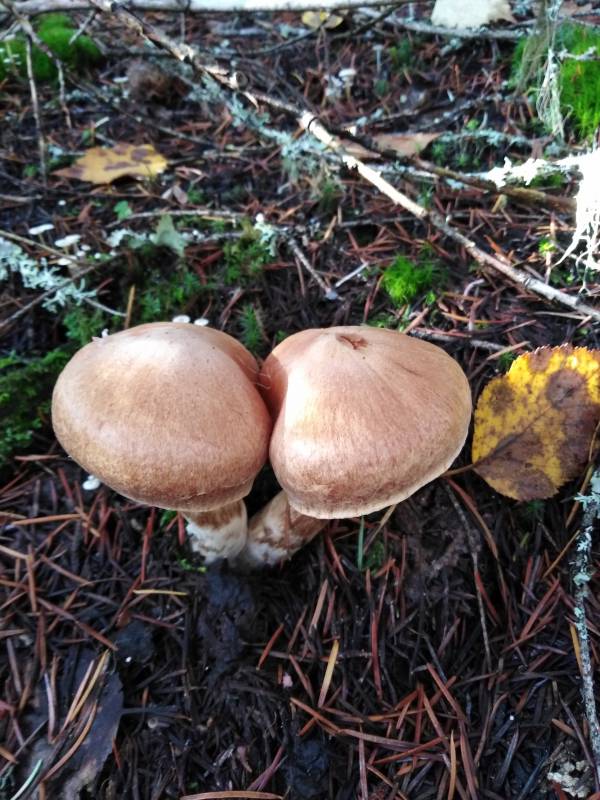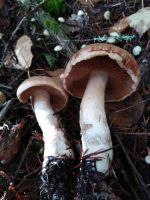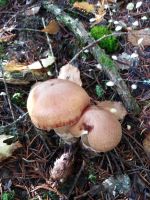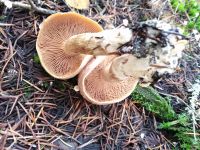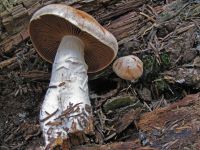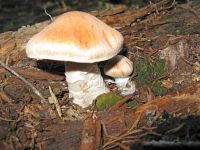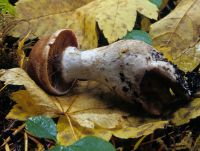Distribution: Widespread, but variable in its fruiting, in some years being rather common and in others being absent.
Habitat: C. laniger is characteristic of boreal and montane conifer forests.
Conservation Status: Not of concern
Cortinarius laniger is medium-sized to large and rather fleshy. The cap is dome-shaped with an umbo, bright brown to cinnamon brown or deep red-brown, and often wrinkled, streaked, and covered with whitish veil remnants along the edge when fresh. The odor is strongly of radish, and the flesh of the cap and stipe is whitish, usually with cinnamon brown or yellow-brown areas. The gills are vivid cinnamon brown to rust brown, and close to crowded. Usually the stipe is club-shaped to bulbous, rather thick, white to brownish, and has a heavy white veil that leaves bands and patches below the ring-zone. The spores are large, rather broad, and densely ornamented. C. laniger and related species come in a variety of forms. Some have lilac colors in the stipe apex when young, and might be closer to C. solis-occasus. C. bivelus is somewhat similar but grows with birch.
Sources: Trudell, Steve and Joe Ammirati. Mushrooms of the Pacific Northwest. Portland, Timber Press, Inc. 2009.
PNW Herbaria: Specimen records of Cortinarius laniger in the Consortium of Pacific Northwest Herbaria database
CalPhotos: Cortinarius laniger photos

